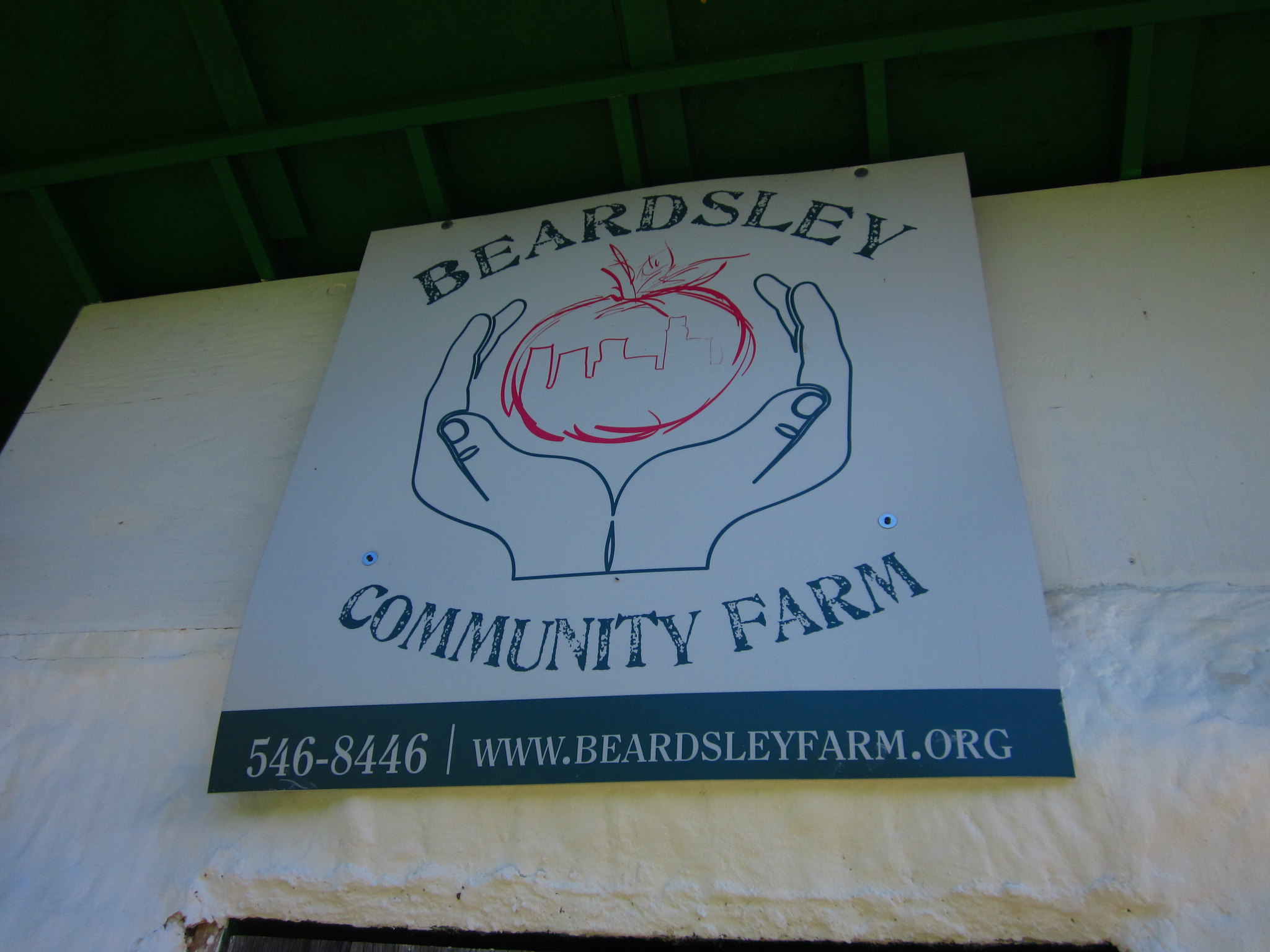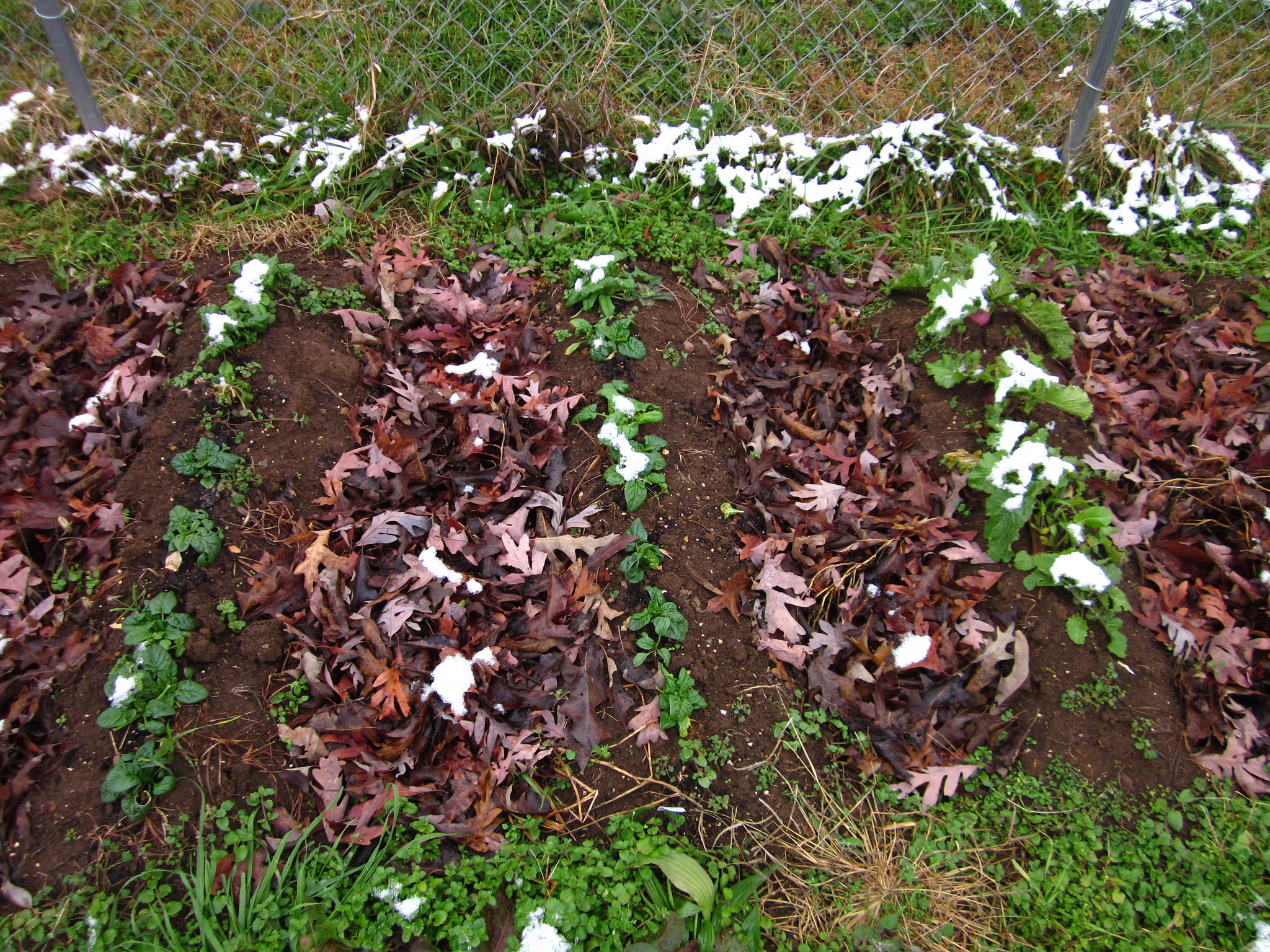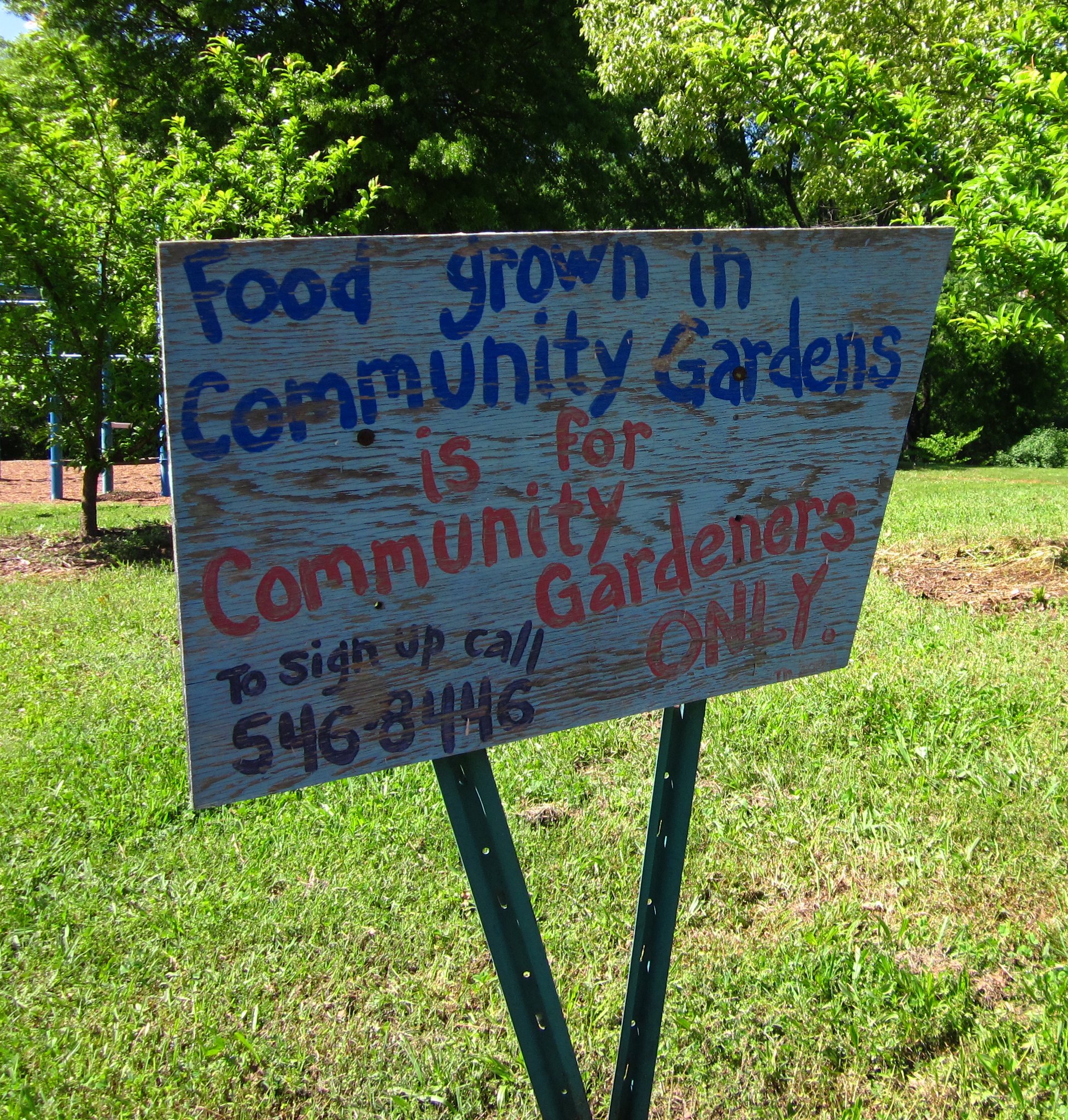 |
| Beardsley's mission is to increase access to fresh produce through education, product donations and outreach. |
About the Community Garden
Beardsley Community Farm is a part of the city of Knoxville's Malcolm Martin Park. Their mission is to increase access to fresh produce through education, product donations and outreach. Although the farm is located just down the road from a Food City grocery store, many of the folks who live in the low income housing surrounding the property struggle with access to fresh fruits and vegetables.
Community Action Coalition (CAC) AmeriCorps. In a given year, the Americorp may contribute 3 to 5 staff members whose sole job is keep up the farm's operations.
In addition to community plots, the property includes a berry patch, orchard, and a fenced-in demonstration garden complete with a greenhouse, chickens, worm composting, and massive rain barrels. The food produced in the demonstration areas is donated to organizations such as Knoxville Area Rescue Ministries, Family Crisis, and Bridge Refugees. Gleaning beds are located just outside the community garden area. The idea is that hungry folks will take food from the gleaning beds instead of the community garden plots.
 |
| In a given year, Beardsley will host about 1000 volunteers, like this group of UT students. |
In a given year, Beardsley will host around 1000 volunteers. About one tenth of the volunteers come from the local community. The rest come from local community colleges, universities, and work groups like Comcast and Scripps. For this reason, Beardsley is not what I'd consider a "true" community garden that was founded by and for the community. Even though the farm may never be completely community run, it isn't hard to argue that they do a great deal of good for their neighbors.
The plot thickens
 | ||||||||
| I adopted a plot that had been abandoned in the heat of summer. |
Although I would have liked to get started gardening earlier in the spring, I didn't want to take away an opportunity for someone from nearby low-income housing to have a garden plot. That's why I waited until August to take over one of the plots that had been abandoned earlier in the season. Clearing out my bed took about four hours altogether, but it was easy work for a garden nut fueled by visions of freshly grown fruits and vegetables.
I left the previous owner's marigolds and two of the their tomato plants in case they came back for some food. Although I later learned that they'd moved out of town, somebody had been enjoying the tomatoes. Every time I came by to weed and water, there were only green tomatoes on the plants.
It was a bit late in the summer to grow warm season vegetables, so I spent most of August preparing the bed for my cool season vegetables. I decided to make eight raised rows for my fall garden. The water would easily drain from the raised rows. Although this meant a bit more time watering in September, I hoped it create a warmer soil temperature and hopefully more productive crops later in the season.
 | |
| Buckwheat provided some cool shade for the seedlings until the temperatures were consistently in the 60's |
I chose to direct sow instead of using store-bought transplants. In September, I made a small trench along the top of each row. I filled each trench with lettuce, spinach, turnip or broccoli seeds, then covered with some of the vermicompost from the system I keep on the patio of my apartment. I set aside two rows for each plant, and planted one row of each crop two weeks apart to extend my growing season. I had more greens than I knew what to do with from mid-September until the end of November. Snow peas and nasturtiums were planted around the old tomato cages and marigolds.
 |
| Fall leaves between each row added organic matter as they decomposed and attracted worms. |
Community Gardening: Is it for you?
Although I only worked in a community garden for a brief time, I've fallen in love with the experience. Yes, sometimes other people picked my vegetables, but I always had plenty to feed myself. Beyond just being able to provide fresh produce for myself that I probably wouldn't have been able to get on my limited budget, I also enjoyed the sense of community I felt when I worked in the garden. I got to know some of the folks who live nearby that walk the track in the park, and catch up about the weather and what's going on in the garden. I also learned a few new tricks from folks who worked in neighboring plots.
When deciding whether or not to join a community garden, I think that it would be a good idea to ask yourself the following questions:
- Do you lack space to successfully grow a vegetable garden at home?
- Are you looking for ways to add fresh fruits and vegetables to your diet?
- Do you have at least an hour a week to spend maintaining your plot?
- Would you like to feel more connected to what's going on in the environment and your community?
- Would you be able to keep your cool if somebody shared in your harvest without asking?
To see more photos of my plot at Beardsley community farms, check out my flickr set.
If you have any questions, ideas, or suggestions, please feel welcome to leave a comment on this post or shoot me an email.
Folks who have community gardened before, what was your favorite part about the experience? What was your least favorite part about community gardening? Any advice for people who are considering joining a community garden?
 |
| There had been snow the morning before Thanksgiving when I cleared out my bed. Community gardeners are encouraged to harvest their cool season vegetables by the 28th of November. |



No comments:
Post a Comment